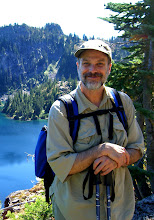So it is said that false [thinking] is stopped and stillness necessarily arises, stillness arises and wisdom appears, wisdom arises and stillness necessarily disappears [in wisdom’s active functioning].
~ 12th century Ch’an master Hongzhi Zhengjue
Seeing the nature of suffering brings disgust with reactive patterns, and encourages
an intention to wake up and free oneself and others from struggle and suffering. What are traditionally known as renouncing samsara and taking refuge in awakening can arise because we all want and have the ability to be happy; they are deepened endlessly as we cultivate them intentionally.
Resting in experience as it arises brings settling and stability -- the capacity to abide in whatever arises without grasping at experience or pushing it away. There are many ways: cultivating a sense of being grounded and supported; anchoring the body and mind, with or without an object of support (such as the contact and weight of the body on the seat, or the flow of sensations in the body, or the experience of breathing in and out); relaxing one’s habitual efforts to control what arises; letting the momentum of thought and emotion mind settle naturally. The capacity to rest in experience as it arises, in Sanskrit
shamatha, is often translated as
calm abiding, but this isn't ordinary calm or tranquility; this is true strength, the flexible capacity to abide in everything as it arises and falls.
Opening to experience brings what is arising into vivid clarity, so that experience is not ignored or murky. It is helpful to be careful here, to continue relying on the first effort of grounding and resting, so that opening to sensations, feelings, and stories doesn't become overwhelming. Shamatha is both stable and vivid. When we are grounded and stable, then we can
let our whole experience open to include everything: the pleasant and unpleasant, the calm and turbulent, the clear and familiar and the unclear and mysterious, the complex, the mixed, even the contradictory.
Gently, relaxing from the inside out, include, include, include: bring together everything you have and everything you experience, everything inside and outside: this is recollecting, re-membering (
sati).
Looking deeply into what arises brings a clear knowing of the nature of experience, and eventually a growing ability to discern the difference between what brings struggle and suffering, and what brings freedom. Again, capacity to be grounded and to abide in experience is essential as a base for insight practice. It’s fine for a session to be mostly resting, with brief periods of opening and looking deeply. And we say looking -- the Sanskrit term
vipashyana means
insight or
clear seeing -- but the practice really requires all our senses: sight, sounds, taste, smell, touch, time, balance, location, movement, time and space, intuition --
sensing in every sense.
Kindness, compassion, and generosity help mitigate and eventually undermine the confused sense of self that is the seed for the reactive attachment and aversion that create struggle and suffering.
Responding from what one knows brings balance and freedom to inner and outer experience. We can let go of habituated reactions naturally when we see how reactivity is futile; we can relate to others.
Kindness, compassion, and generosity help mitigate and eventually undermine the confused sense of self that is the seed for the reactive attachment and aversion that create struggle and suffering.
Taking responsibility for training ourselves and others in whatever skills and abilities we need to be free from struggle and suffering. There are infinite
skillful means (upaya) that can be cultivated on the cushion and practiced in daily life interactions and relationships. This is where awareness and compassion are united, where practice meets the world.
Explore making each effort gently, persistently, sustainably, effectively. These are different but interconnected efforts and results that need to be adjusted and balanced as one goes along. Explore and play. All these efforts can be made and experienced on every level: physical, emotional, mental, behavioral. Practice the different efforts alternately, and explore how to balance and mix them. Thoroughly come to know each kind of effort, and the different results. Too much anxiety, vividness, and confusion may suggest resting more. Too much dullness may suggest opening and looking. Seeing clearly but nothing changing may indicate that what is needed is action, in the real world, that arises from one’s knowing.
Each of us must find our own ways to make these efforts, and learn to recognize false and genuine results as they arise. Mix the efforts together until they arise simultaneously, united, easily, sincerely. How long will it take? This is a life-long practice, an infinite game. Ken McLeod’s version of the four Zen vows says:
Beings are numberless: may I free them all.
Reactions are endless: may I release them all.
Doors to experience are infinite: may I enter them all.
Ways of awakening are limitless: may I know them all.
Like everything in this world, one’s practice can never bring permanent or perfect results separate from the causes and conditions that arise and subside. And yet, everyone has an inherent, indestructible potential for knowing what is arising in each moment, and for responding in ways that reduce struggling and suffering and restore balance. With practice, knowing and freedom arise together, and one experiences equanimity, kindness, compassion, and joy. These are natural, inherent human abilities. Sincere, gently, persistent, creative practice make them accessible. Try it and see!
printable version here


